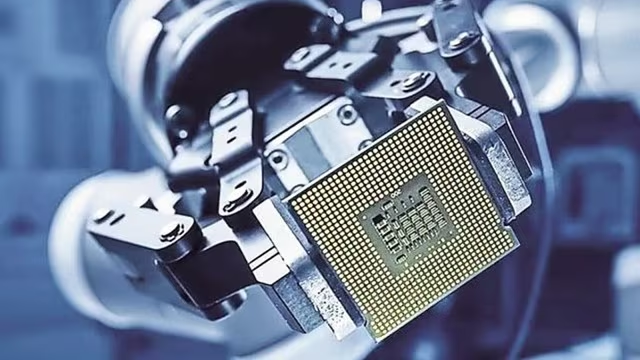
-advertisement
The Indian government has launched an ambitious $15 billion blueprint to strengthen the country’s semiconductor manufacturing capabilities, offer capital support for raw materials and gases used in chip manufacturing, and reduce subsidies for assembly and testing plants.
“In a short period of time, we managed to clear four chip proposals including a fabrication plant. The original incentive policy outlay of $10 billion will almost get over once subsidy payments are made to the entities setting up these facilities.
We want to attract more such plants, and therefore, have pegged that the new 2.0 scheme should have a higher outlay of $15 billion so that we can remain competitive, given that many countries are trying to attract chip manufacturing,” a senior government official said, requesting anonymity since the discussions are currently private.

India has ambitions to become a major chip hub on the lines of the United States, Taiwan and South Korea, and has been courting foreign companies to set up operations in the country. So far, the country has approved a fabrication plant worth $11 billion being set up by Tata Electronics in partnership with Taiwan’s Powerchip, and three different chip assembly plants being set up by the Tatas, US-based Micron Technology, and Murugappa Group’s CG Power in partnership with Japan’s Renesas.
In an internal note prepared with the projections for the renewal of the scheme, the government has also decided to reduce the capex subsidy for assembly and testing plants (ATMP/OSAT) from the current 50 per cent to 30 per cent for conventional packaging technologies, and 40 per cent for advanced packaging technologies.
Now though, the government wants to go back to its earlier subsidy contribution, there is a growing perception within sections of the administration that it has overspent on packaging and assembly plants. For instance, in Micron’s case, nearly 70 per cent of its $2.7 billion plant will be paid through subsidies offered by the Central Government, and the Gujarat government.
The government also does not want to support technology transfer costs under the new incentive scheme, it is understood. This means that companies partnering with others for using their chip manufacturing technology may have to pay out of their own pocket.
Editor:Vicky
▼▼▼
SK hynix develops industry's first 16Gb DDR5 on advanced 1c node
ASML's China Chip Business Faces New Curbs From Netherlands
Japan's semiconductor equipment sales hit record highs, surging 23.6% in July
Nvidia Q2 earnings blow past expectations, but shares slide after hours
Applied Materials receives subpoena from U.S. Department of Justice, faces further scrutiny
Micron said to buy factories from AUO in deal worth up to $620M
+86 191 9627 2716
+86 181 7379 0595
8:30 a.m. to 5:30 p.m., Monday to Friday
